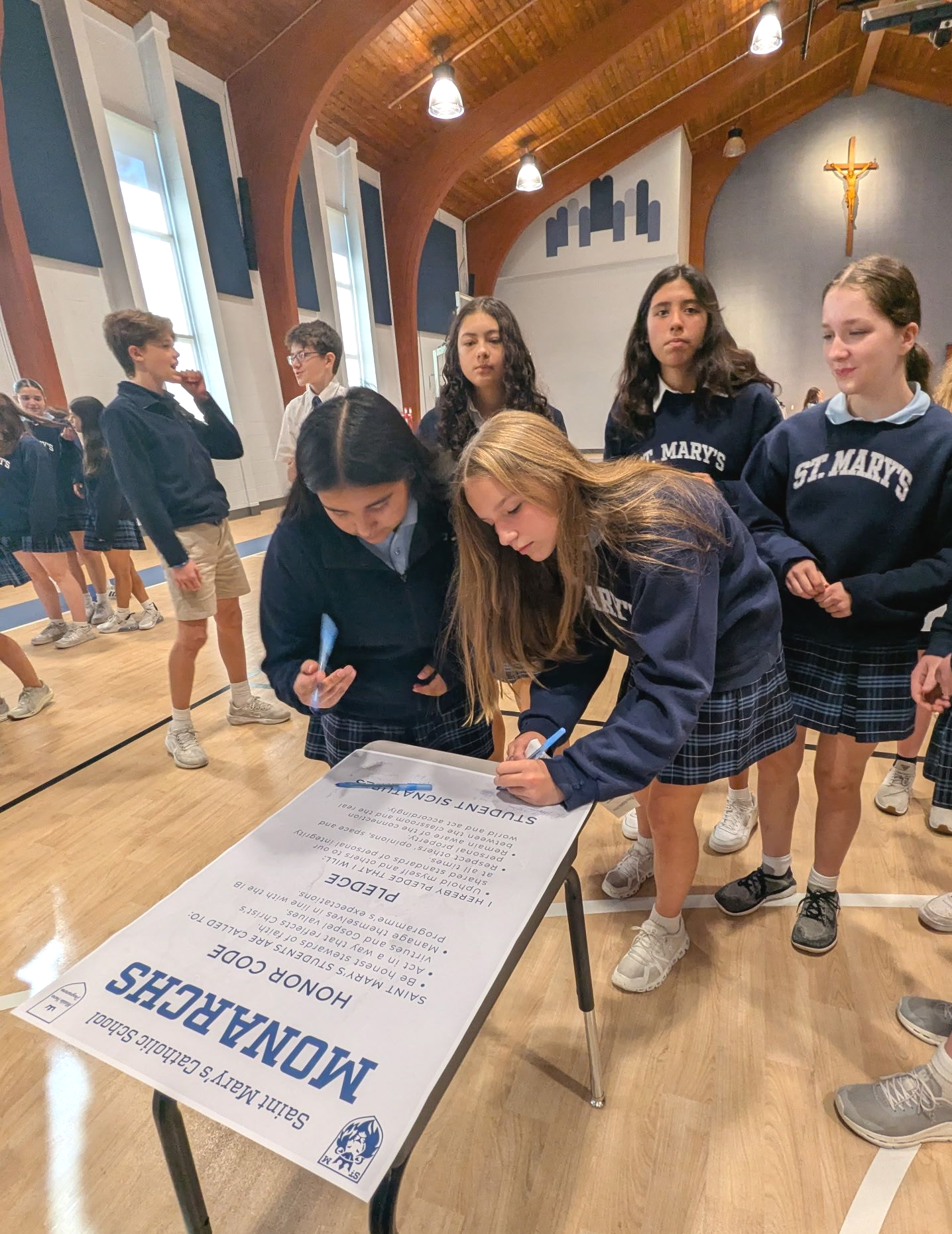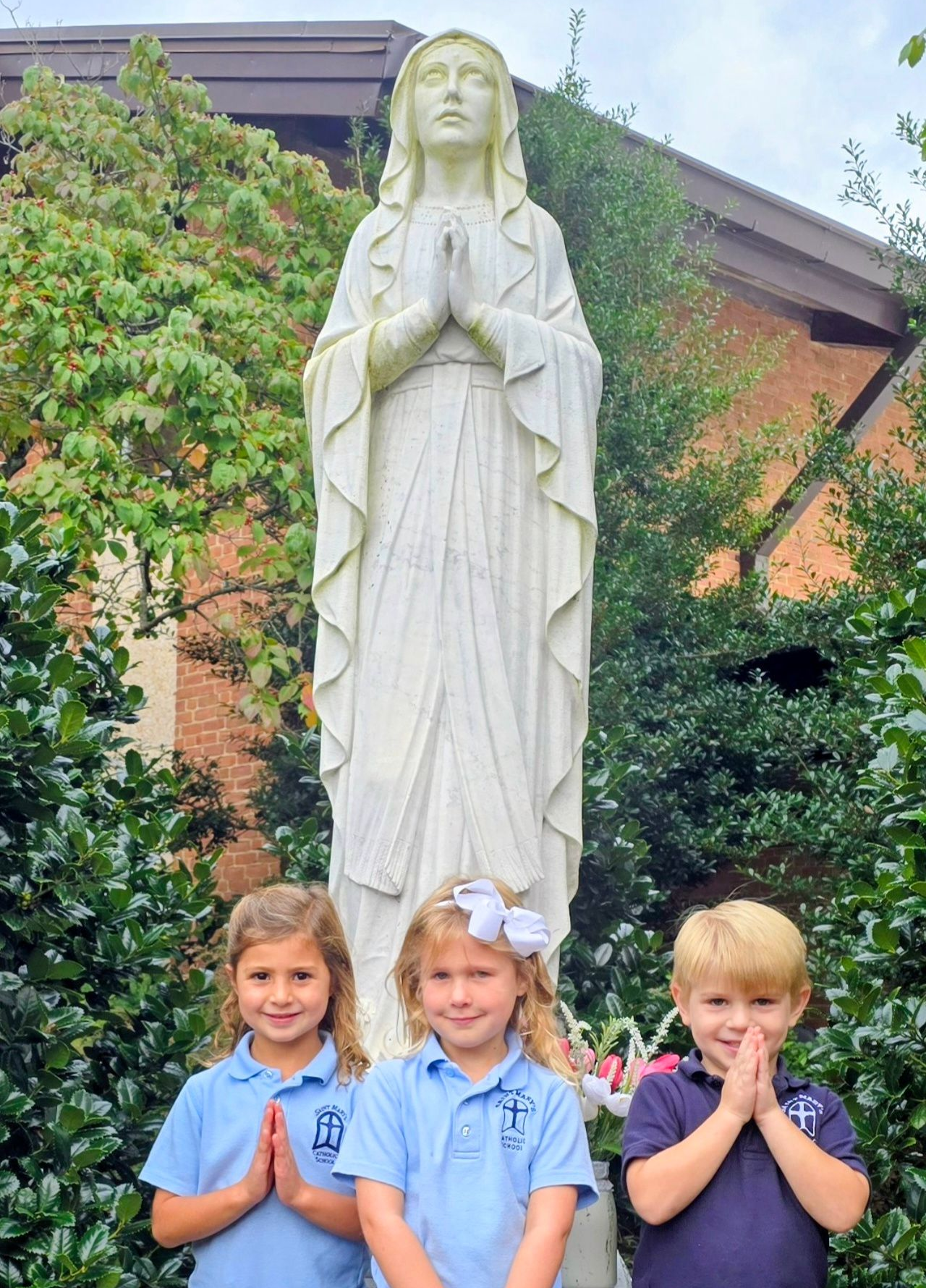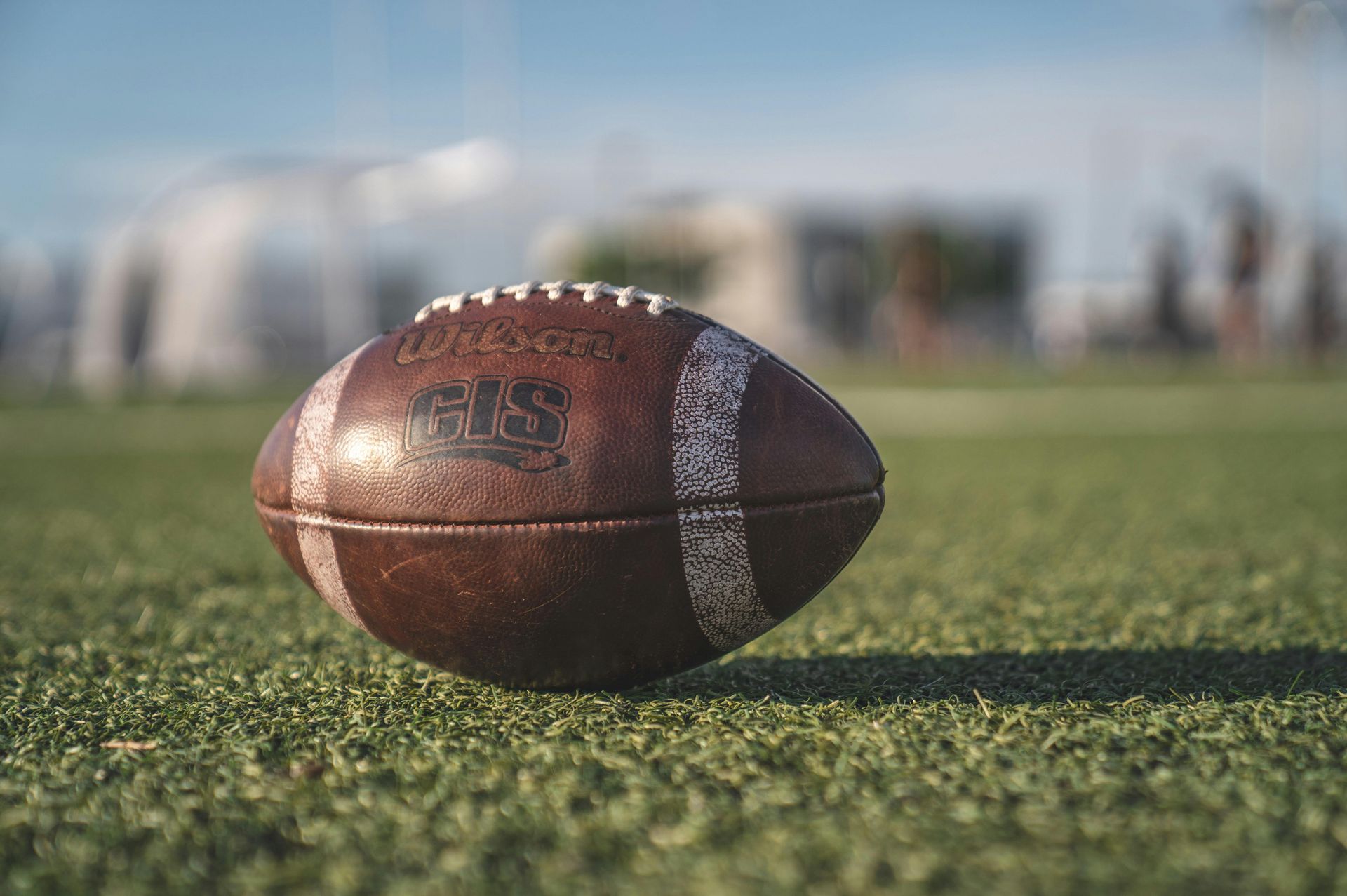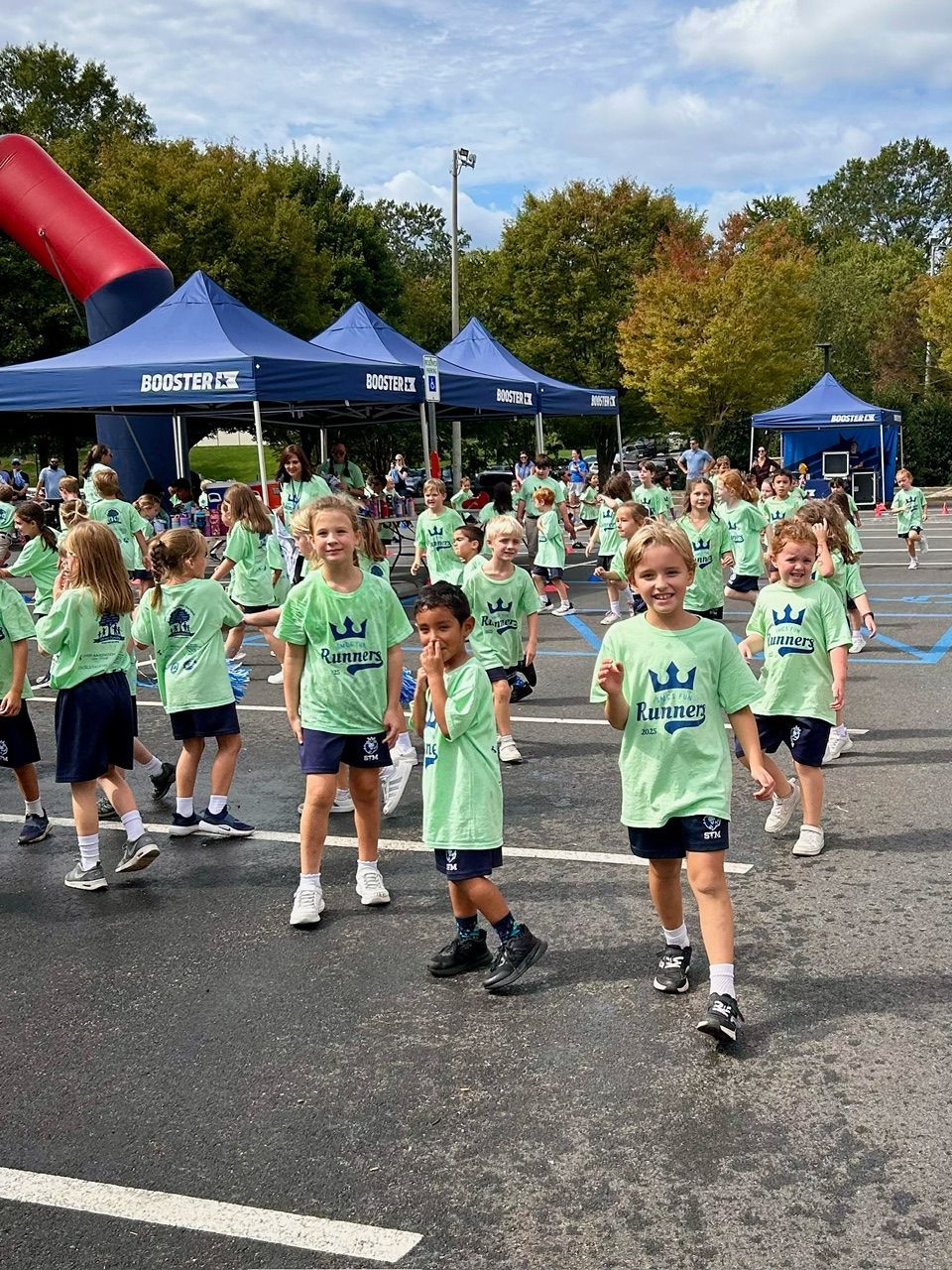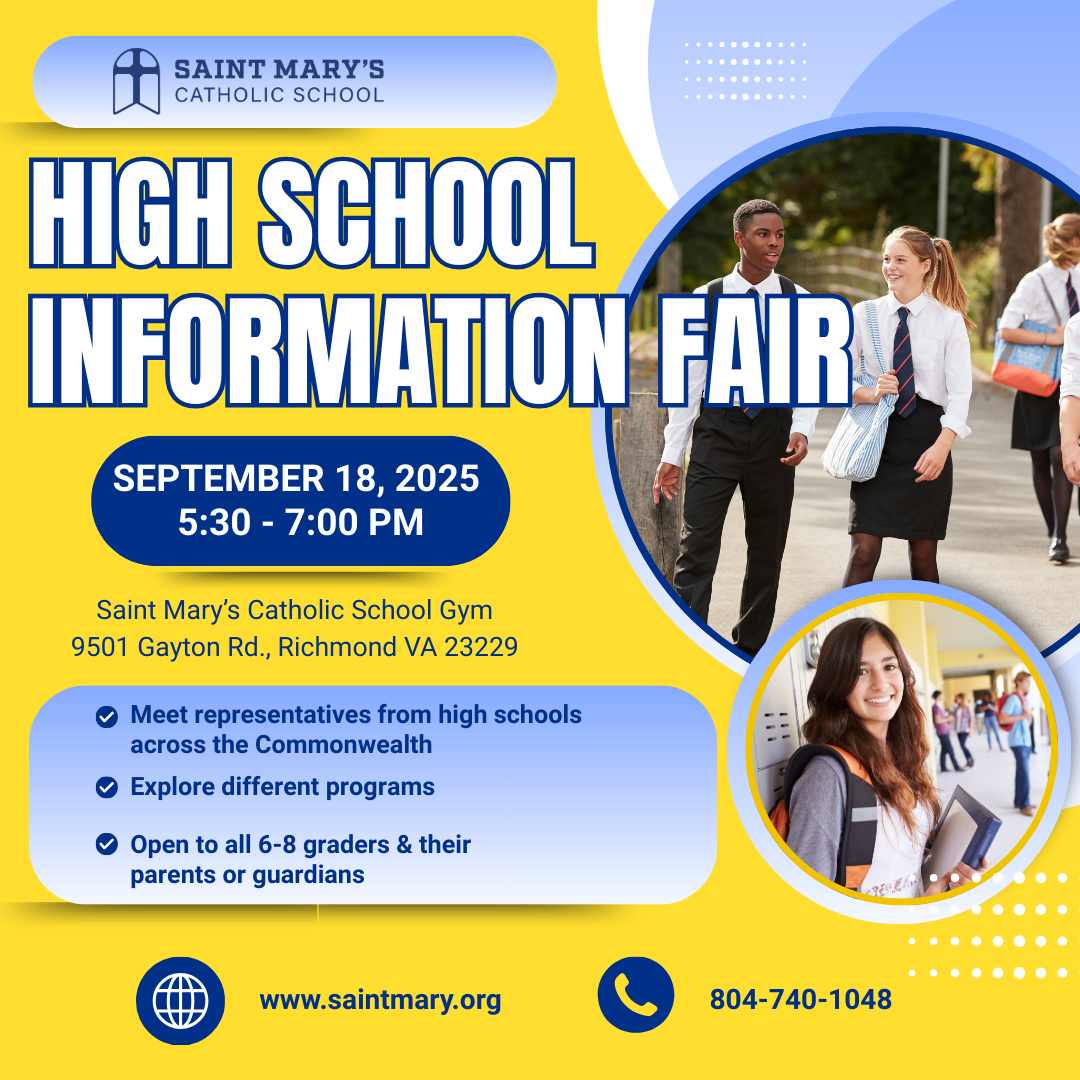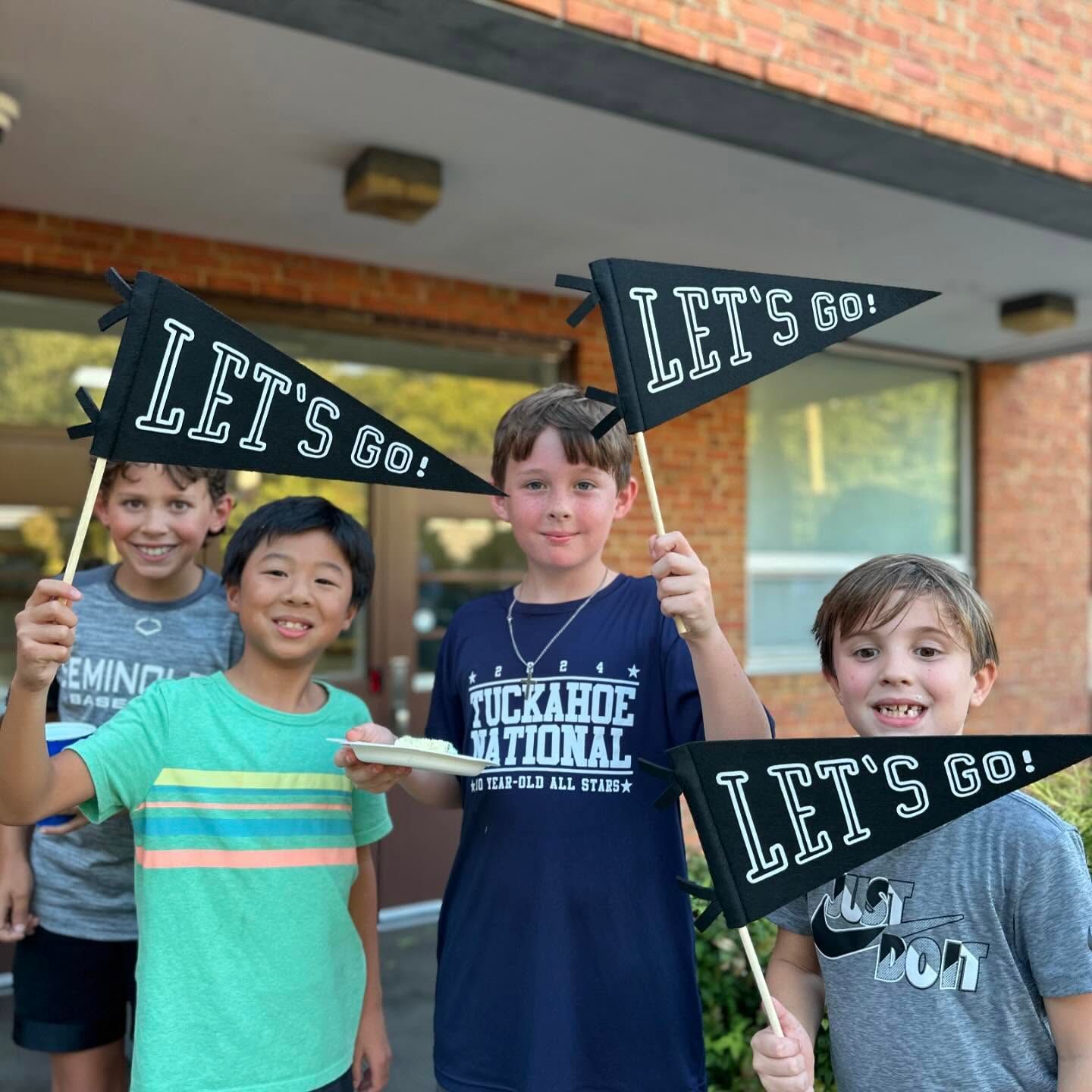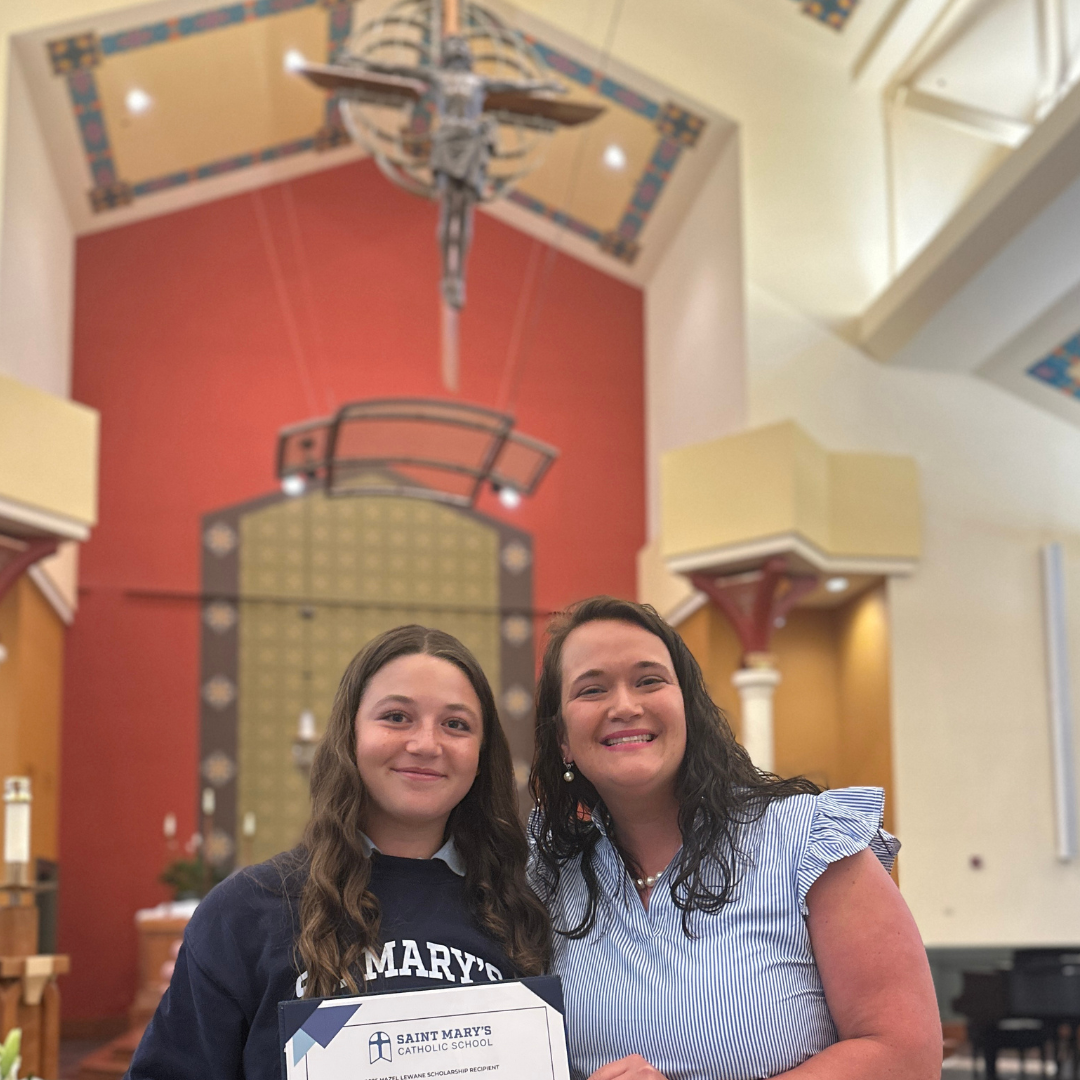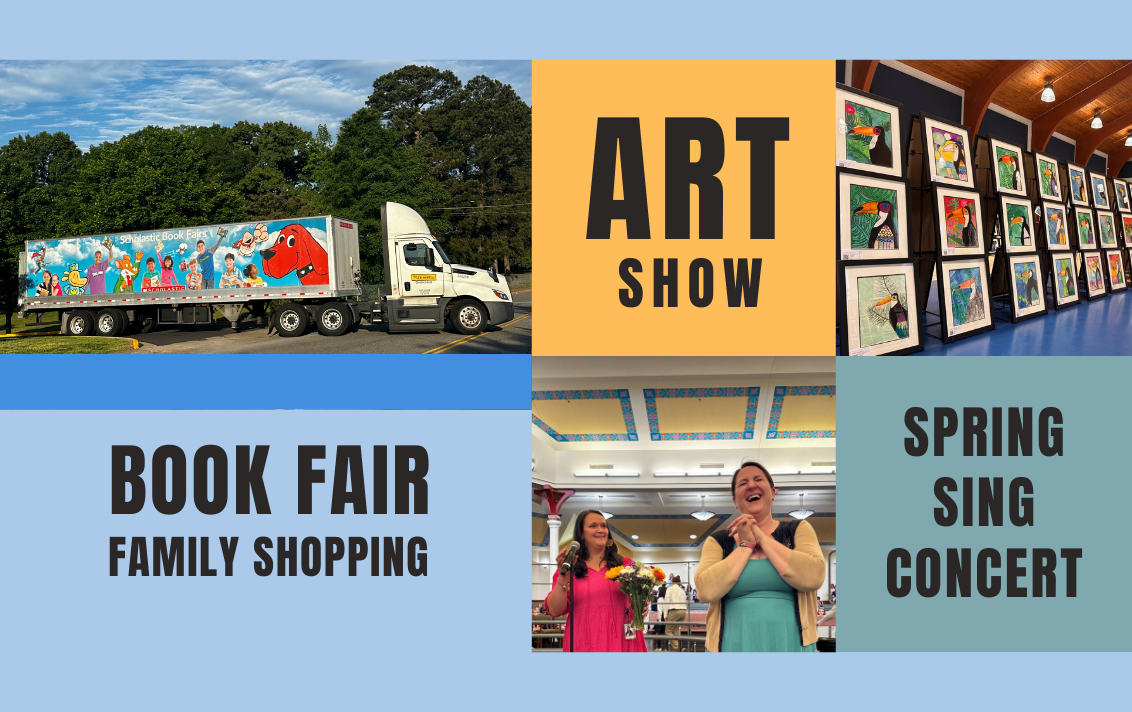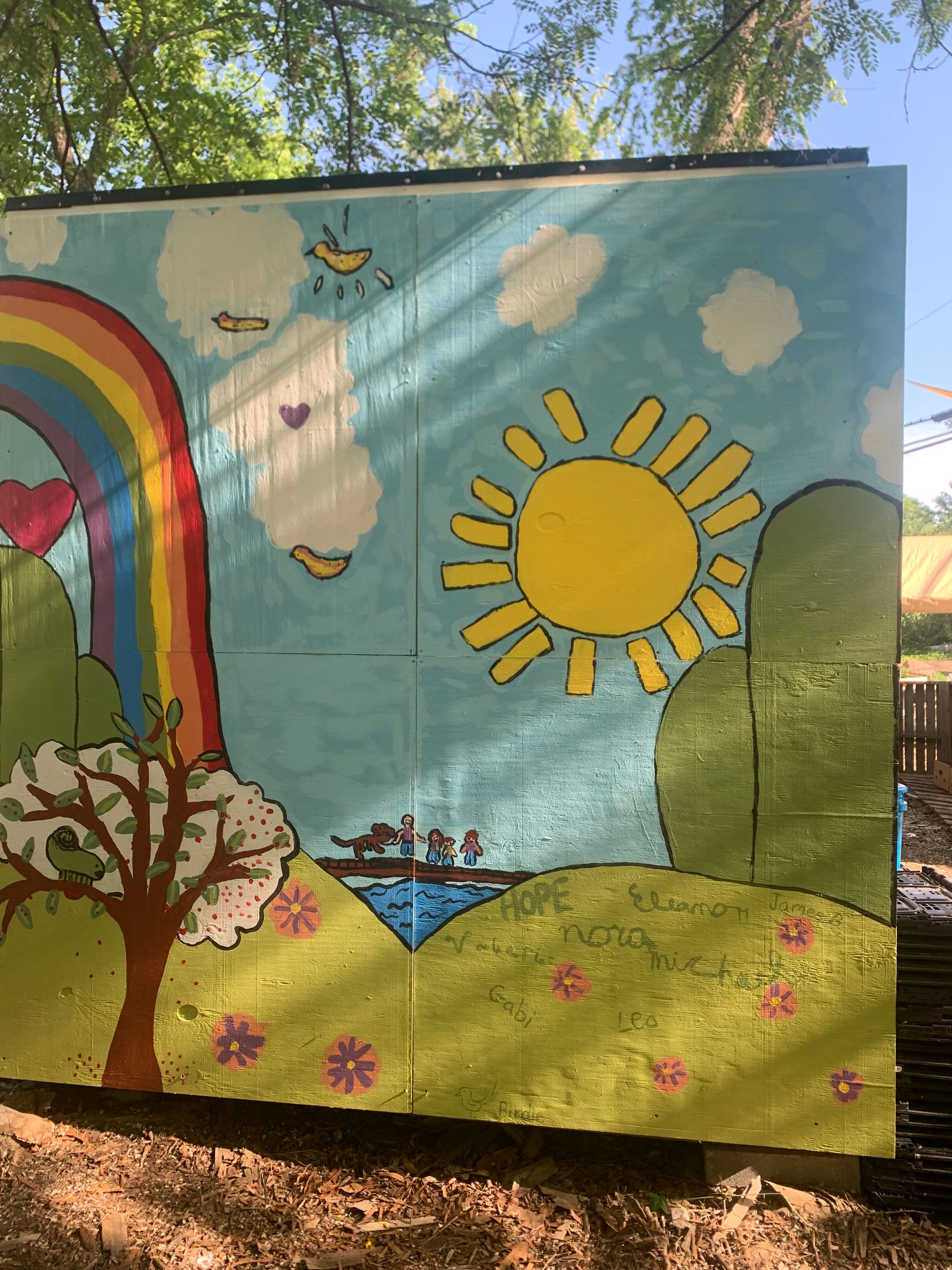MOON SHOT
Saint Mary's Team selected for 2025 HERC Challenge
From Moon Shot Idea to Design Challenge Reality
Mr. Tlusty received some very exciting news today! After many years of leading student teams through successful Cubes in Space missions, this school year Mr. Tlusty will lead the first St. Mary's team to compete in NASA's Human Exploration Rover Challenge (HERC).
Last month, Middle School students worked with Mr. Caulder and Mr. Tlusty to submit a comprehensive project proposal to compete in a division that is new to the HERC Challenge this year, the Remote Car (RC) Division.
NASA's HERC competition is open to U.S. and International Students in High Schools, Colleges and Universities. This year's competition has been expanded to also include Middle School students aged 11-14. Saint Mary's is one of only two Middle Schools in the world to be selected for this honor!
2025 Remote-Control Division Schools
- Alabama A&M University; Normal, Alabama – College/University
- Assumption College; Bangrak, Bangkok, Thailand – High School
- ATLAS SkillTech University; Mumbai, Maharashtra, India – College/University
- Blue Box; Santa Cruz de la Sierra, Bolivia – College/University
- Campbell University; Buies Creek, North Carolina – College/University
- Central Magnet School; Murfreesboro, Tennessee – High School
- Colegio Santa Terezinha; Sao Goncalo, Rio de Janeiro, Brazil – High School
- Enteskedu; Baku, Azerbaijan – High School
- Erie High School; Erie, Colorado – High School
- Instituto Salesiano Don Bosco; Santo Domingo, Dominican Republic – High School
- Instituto Tecnologico de Santo Domingo; Santo Domingo, Dominican Republic – College/University
- International Hope School of Bangladesh; Uttara, Dhaka, Bangladesh – High School
- Jesco von Puttkamer School; Leipzig, Germany – Middle School
- Military Institute of Science and Technology; Mohammadpur, Dhaka, Bangladesh – High School
- NPS International School; Singapore – High School
- Preludio; Usaquen, Bogota, Colombia – High School
- Princess Margaret Secondary School; Surrey, British Columbia, Canada – High School
- Saint Mary Catholic School; Richmond, Virginia – Middle School
- Southwestern Oklahoma State University; Weatherford, Oklahoma – College/University
- Tecnologico de Monterrey – Campus Cuernavaca; Xochitepec, Morelos, Mexico – College/University
- Union of Social and Cultural Organizations from Camacari; Camacari, Brazil – High School
- Universidad Catolica Boliviana “San Pablo” Sede Cochabamba; Cochabamba, Bolivia – College/University
- Universidad Nacional de Ingenieria; Lima, Peru – College/University
- University of Central Missouri; Warrensburg, Missouri – College/University
- Woodlands Academy of the Sacred Heart; Lake Forest, Illinois – High School
Background (Source: 2025 HERC Handbook)
Since its inception in 1994, the Human Exploration Rover Challenge (HERC) has been hailed as one of the most exciting student challenges taking place in Huntsville, AL, with support from NASA’s Marshall Space Flight Center. Formally known as the Great Moonbuggy Race, the challenge was conceived in the spirit of NASA’s Apollo missions to the moon, and the Apollo Lunar Roving Vehicle (LRV) that carried the frst men in history across the lunar surface. Students created vehicles (dubbed “moon buggies”) to face challenges similar to those engineers at NASA’s Marshall Space Flight Center addressed in preparation for Apollo 15.
Today, humankind is returning to the moon through NASA’s Artemis Mission with the goal of landing the first woman, first person of color, and first international partner astronaut on the moon. The Artemis mission will explore the moon for scientific discovery, technology advancement, and to learn how humans can live and work on another world as we prepare to propel ourselves further into space, to Mars. The next humans to land on the moon will use innovative technologies to explore more of the lunar surface than ever before and inspire the next generation of explorers—the Artemis Generation.
Each year the NASA Human Exploration Rover Challenge (HERC) features an engineering design challenge to engage students worldwide in the next phase of human space exploration. As an Artemis Student Challenge, HERC draws inspiration from both the Apollo and Artemis missions, emphasizing designing, constructing and testing technologies, as well as traversing unique environmental terrain.
During Apollo 15 astronauts utilized the first automotive vehicle on the moon, the Lunar Roving Vehicle (LRV). With this rover, astronauts were able to collect more lunar samples than the previous two Moon-landing missions combined and spent twice the time on the Moon than Apollo 14.
NASA’s 21st century lunar exploration program is called Artemis. Artemis missions will turn science fiction into science fact as we make new discoveries, advance technologies, and learn to live and work on another world. The commercial partners have already been chosen to design and construct the next-generation rover, the Lunar Terrain Vehicle (LTV).
NASA’s goal with the Artemis mission is to send the first woman and first person of color for exploration at the Moon’s South Pole and to develop a sustained human presence on the Moon. On the Moon we will learn what resources are available and abundant enough that we don’t need to send them from Earth. Using resources, including water, found in space will help reduce our dependency on Earth as we move farther into the solar system.
With human exploration of Mars on the horizon, NASA is developing many of the technologies needed to send humans farther into the solar system today. Our work on the Moon under the Artemis program will prepare us for that next giant leap sending astronauts to Mars.
Lunar science on the surface of the Moon will be conducted with polar and non-polar landers and rovers which will explore areas not investigated during Apollo missions. This student design challenge encourages the next generation of scientists and engineers to engage in the design process by providing innovative concepts and unique perspectives. HERC also continues the Agency’s legacy of providing valuable experience to students who may be responsible for planning future space missions including crewed missions to other worlds.
This year, NASA will mark 31 years of engaging students in an engineering design challenge to design, build, and race human-powered vehicles over simulated lunar/Martian terrain. Just as space travel has evolved over the past 31 years and is now returning to its roots by revisiting the lunar surface, HERC has evolved and continues to re-align its core framework to NASA’s current mission directorates and commercial partners.
In 2014 the motivation changed to mimicking design challenges faced by engineers designing rovers for future exploration missions to a variety of celestial bodies. As technology advanced and materials used in the building of space travel vehicles became lighter and stronger, size restrictions on the rover were changed from fitting inside a 4-ft. (1.2 m) cube. Beginning in 2014, the rover constraint was changed to a 5-ft. (1.5 m) cube.
Since 2016, to advance the rigor and to better align with the NASA engineering design process, teams must design and fabricate their own non-pneumatic tires/wheels. Purchasing commercially available products are prohibited. As the Artemis mission became the forward face of NASA, in 2020, the challenge was again adapted, and a new rule that the rover riders must be one male and one female was put into effect. Now, with the success of Artemis I and the launch of Artemis II on the horizon, mankind is getting closer to setting foot on the moon once again. As in the past, HERC is evolving; with new goals and ideas, to continue to challenge the next generation of rover riders; the Artemis Generation.
This year we are proud to announce a new pathway to experience HERC. Teams will choose to participate in either the traditional Human-Powered (HP) or the new Remote-Controlled (RC) divisions. This change not only better aligns HERC with current NASA missions, it expands the reach of the program to include more STEM disciplines and grade levels.
More about HERC (Source: 2025 HERC Handbook)
The NASA Human Exploration Rover Challenge (HERC) is a rigorous and continuously evolving activity which engages students in hands-on engineering design related to NASA’s missions. HERC aims to meet established educational objectives and provide continuous program improvement that satisfy the needs of its participants.
Through participating in HERC, students will develop a deeper understanding of content and enhance their communication, collaboration, inquiry, problem-solving, and flexibility skills that will benefit them throughout their academic and professional lives.
HERC aligns with the Next Generation Science Standards and Accreditation Board for Engineering and Technology (ABET) criteria outlined below:
Next Generation Science Standards (NGSS) — Middle School (6–8)
- MS-PS3-1 Energy MS-PS3-1 Construct and interpret graphical displays of data to describe the relationships of kinetic energy to the mass of an object and to the speed of an object.
- MS-PS3-3 Energy MS-PS3-3 Apply scientifc principles to design, construct, and test a device that either minimizes or maximizes thermal energy transfer.
- MS-ETS1-1 Engineering Design MS-ETS1-1 Defne the criteria and constraints of a design problem with suffcient precision to ensure a successful solution, taking into account relevant scientifc principles and potential impacts on people and the natural environment that may limit possible solutions.
- MS-ETS1-2 Engineering Design MS-ETS1-2 Evaluate competing design solutions using a systematic process to determine how well they meet the criteria and constraints of the problem.
- MS-ETS1-3 Engineering Design MS-ETS1-3 Analyze data from tests to determine similarities and differences among several design solutions to identify the best characteristics of each that can be combined into a new solution to better meet the criteria for success.
- MS-ETS1-4 Engineering Design MS-ETS1-4 Develop a model to generate data for iterative testing and modifcation of a proposed object, tool, or process such that an optimal design can be achieved.
Photo Credit: NASA (Source: https://www.nasa.gov/nasa-brand-center/images-and-media/)
Photo Caption: This mini-panorama combines two photographs taken by Apollo 15 lunar module pilot Jim Irwin, from the Apollo Lunar Surface Experiments Package (ALSEP) site, at the end of the second Apollo 15 moonwalk on August 1, 1971. Mission commander David R. Scott is leaning to his right and is putting down the Apollo Lunar Surface drill.



